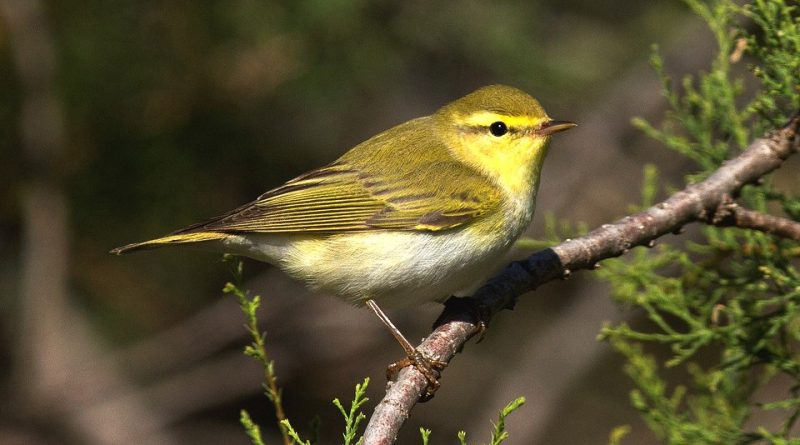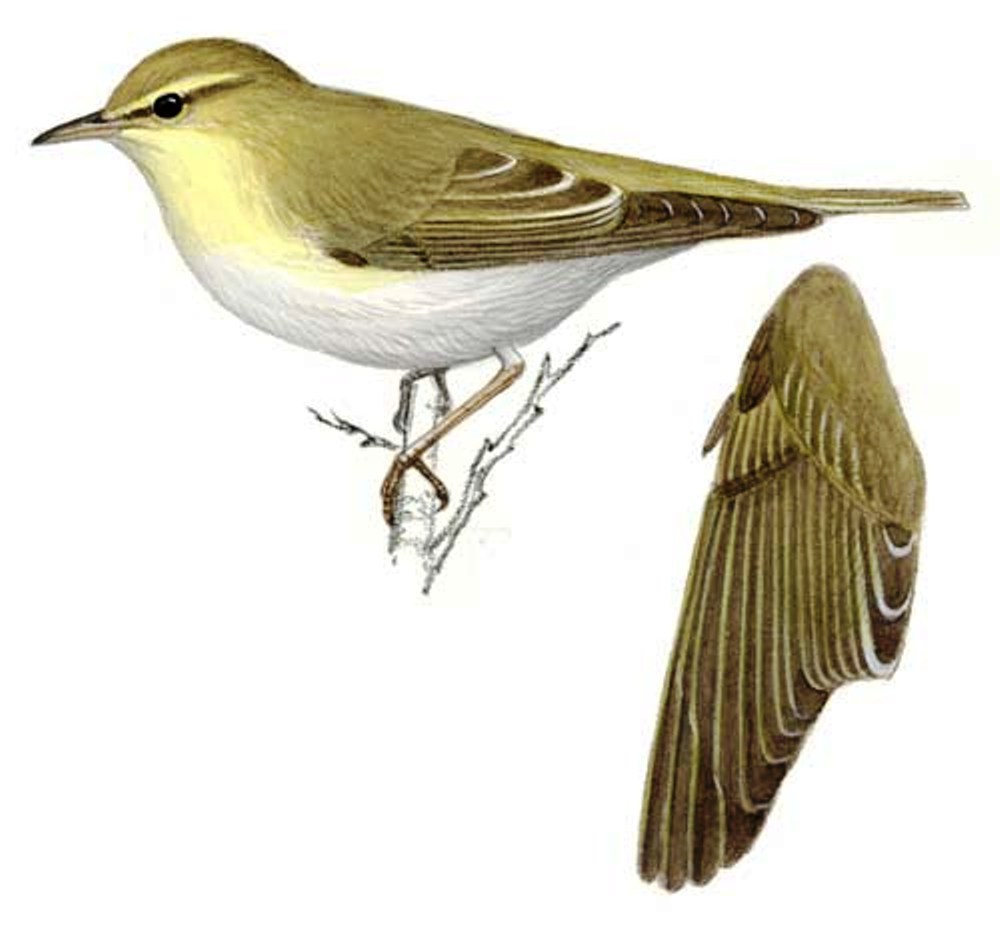Phylloscopus sibilatrix
Phylloscopus sibilatrix
The wood warbler (Phylloscopus sibilatrix, Bechstein, 1793) is a passerine bird belonging to the Phylloscopidae family.
Systematics –
From a systematic point of view it belongs to:
Eukaryota Domain,
Kingdom Animalia,
Sub-kingdom Eumetazoa,
Superphylum Deuterostomia,
Phylum Chordata,
Subphylum Vertebrata,
Superclass Tetrapoda,
Aves class,
Subclass Neornithes,
Superorder Neognathae,
Order Passeriformes,
Suborder Oscines,
Infraorder Passerida,
Superfamily Sylvioidea,
Phylloscopidae family,
Genus Phylloscopus,
P. sibilatrix species.
Geographic Distribution and Habitat –
The wood warbler is a bird with a diffusion in Eurasia and which winters in equatorial Africa in habitats of forests with open foliage, sometimes in more open areas with more scattered trees. In Italy it is a regular migrant and nests in the Alps, up to 1,200-1,300 meters of altitude, and in the central Apennines.
Its habitat is that of humid and shady woods with little undergrowth, beech, oak-hornbeam, chestnut, alnete, birch, pine, spruce and mixed woods.
Description –
The Phylloscopus sibilatrix is a bird with a total length of 12-12.5 cm, with a wingspan of 21-23 cm, for a weight of about 10 grams.
It is a species with little sexual dimorphism, with male and female which are apparently practically indistinguishable.
It has an olive green rump and back; the throat, the sides of the head, including the eyebrow, and the upper part of the chest are yellow; the belly is whitish. The tail is very short.
It has a pink-orange beak in the lower part and blackish in the upper part.
Young people are very similar to adults.
The song of this species is a protracted trill that starts slowly, then accelerates and decreases at the end.
Biology –
The wood warbler builds its nest in a hollow in the ground sheltered by the vegetation, filling it with blades of grass and small leaves. The nest is dome-shaped.
The female lays 5 to 8 small whitish eggs with gray and reddish-brown speckles.
The incubation period lasts about 15 days and after hatching the chicks, which are cared for by both parents, stay in the nest for about 2 weeks.
As for other species of birds, if the chicks are threatened, the mother puts in place a curious “pantomime”: she moves away from the nest walking on the ground, pretending to be wounded in a leg or a wing; with this behavior she draws the predator’s attention to herself, moving it away from the nest, and then flying away.
Ecological Role –
The wood warbler feeds mainly on small insects, including mainly lepidoptera and diptera, and their larvae. Under certain conditions the diet is supplemented with small berries.
This is a bird of open but shady mature woods, with the presence of beeches and oaks, with some scattered ground cover for nesting.
Its predators include mainly medium-sized carnivores, which mostly prey on nests at night using sound or smell.
Guido Bissanti
Sources
– Wikipedia, the free encyclopedia.
– C. Battisti, D. Taffon, F. Giucca, 2008. Atlas of nesting birds, Gangemi Editore, Rome.
– L. Svensson, K. Mullarney, D. Zetterstrom, 1999. Guide to the birds of Europe, North Africa and the Near East, Harper Collins Publisher, UK.


